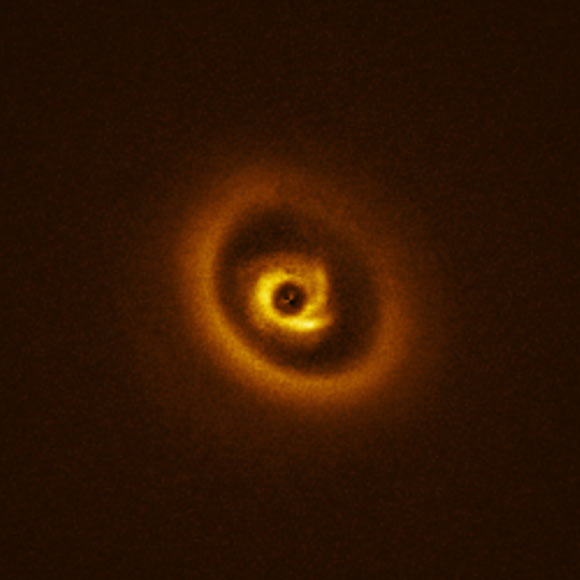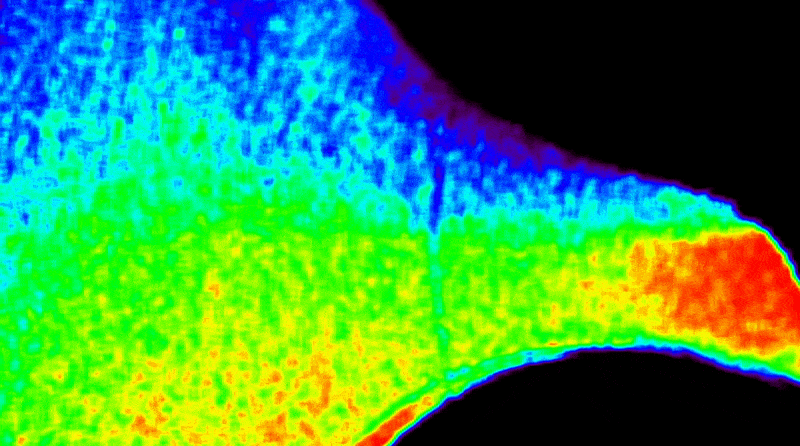Astronomers using ESO’s Very Large Telescope (VLT) have captured spectacular images of an exceptionally structured planet-forming disk around the star RIK 113.
This image, taken with ESO’s Very Large Telescope in Chile, shows the RIK113 system. Image credit: ESO / Ginski et al.
RIK 113 is located approximately 431 light-years away in the constellation of Scorpius.
Also known as 2MASSJ16120668-3010270, the star hosts a structured protoplanetary disk.
“The true complexity of this protoplanetary disk was first uncovered by the Atacama Large Millimeter/submillimeter Array (ALMA) in a study published last year,” said University of Galway astronomer Christian Ginski and colleagues.
“These results showed the presence of a gap, which hinted at a planet-like object embedded within it.”
“This prompted our team to follow up with observations from ESO’s Very Large Telescope (VLT).”
Using the SPHERE instrument on VLT, Dr. Ginski and co-authors captured new images of the system and found that the inner ring has intriguing spiral features.
“While our team has now observed close to 100 possible planet-forming disks around nearby stars, these images are something special,” Dr. Ginski said.
“One rarely finds a system with both rings and spiral arms in a configuration that almost perfectly fits the predictions of how a forming planet is supposed to shape its parent disk according to theoretical models.”
“Detections like this bring us one step closer to understand how planets form in general and how our Solar System might have formed in the distant past.”
A detailed analysis of the VLT/SPHERE data uncovered not just one, but two potential signals from protoplanets around RIK 113, not far from the original detection with ALMA.
For now, these signals are still more of a suggestion than a direct confirmation.
However, with two separate studies from both ALMA and the VLT indicating the presence of at least one planet, these results are extremely promising for a future discovery.
“We found an inner disk (reaching out to 40 AU) with two spiral arms, separated by a gap from an outer ring extending to 115 AU,” the astronomers said.
“By comparison with our own model and hydrodynamic models from the literature, we found that these structures are consistent with the presence of an embedded gas giant with a mass range between 0.1 and 5 Jupiter masses depending on the employed model and their underlying assumptions.”
“The RIK 113 system is one of only a few systems that shows this exceptional morphology of spiral arms located inside a scattered light gap and ring,” they added.
“We speculate that this may have to do with a higher disk viscosity compared with other systems such as PDS 70.”
“If planets in the disk are confirmed, RIK 113 will become a prime laboratory for the study of planet-disk interaction.”
The study was published online in the journal Astronomy & Astrophysics.
_____
C. Ginski et al. 2025. Disk Evolution Study Through Imaging of Nearby Young Stars (DESTINYS): Evidence of planet-disk interaction in the 2MASSJ16120668-3010270 system. A&A, in press; doi: 10.1051/0004-6361/202451647

























